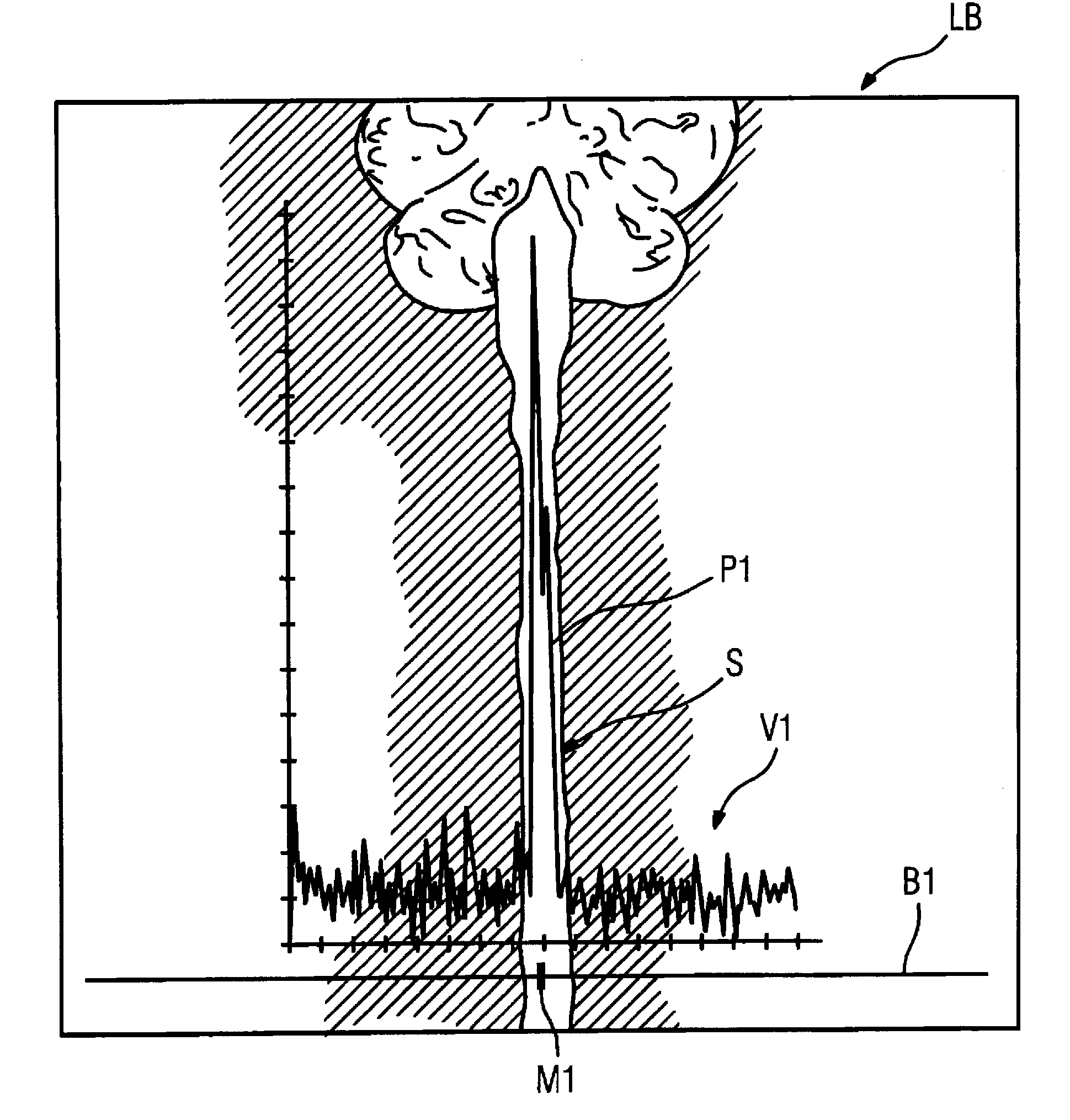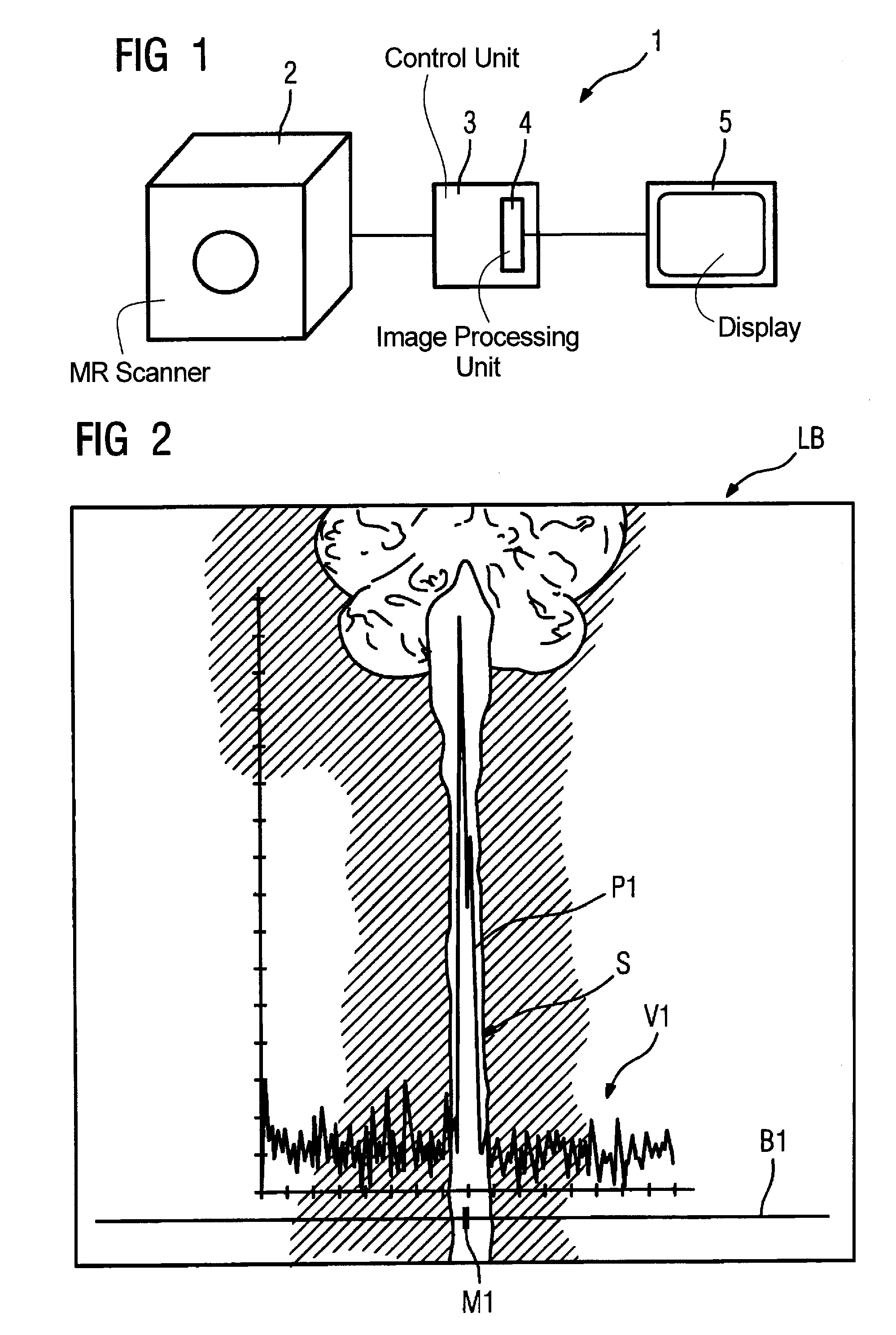Method and magnetic resonance imaging apparatus for automatically determining the sagittal plane of a subject
a magnetic resonance imaging and automatic determination technology, applied in the direction of diagnostic recording/measuring, measurement using nmr, instruments, etc., can solve the problems of image assessment, assessment problems, complicated procedures, etc., and achieve the effect of facilitating the determination of the sagittal plan
- Summary
- Abstract
- Description
- Claims
- Application Information
AI Technical Summary
Benefits of technology
Problems solved by technology
Method used
Image
Examples
Embodiment Construction
[0023]FIG. 1 depicts a magnetic resonance apparatus 1 corresponding to the invention having an MR scanner 2, in which a patient can be placed as well as a control unit 3 (that controls the entire device) with integrated image-processing unit 4, that is used for the image acquisition as well as image processing and assessment and execution of the method of the Invention. A monitor 5 is provided at which images produced by the apparatus 1 can be displayed.
[0024]The image-processing device 4 executes the method according to the invention for the automatic sagittal plane determination. For this purpose, a localizer image exposure in the form of a thick-layer coronal single shot turbo spin-echo localizer exposure is acquired, This image is acquired with a coronal setting in a layer thickness of, for example 60-80 mm for a fixed layer position, i.e. without manual layer positioning. The field of view, and thus the image acquisition region, corresponds to tho usual user measurements, but c...
PUM
 Login to View More
Login to View More Abstract
Description
Claims
Application Information
 Login to View More
Login to View More - R&D
- Intellectual Property
- Life Sciences
- Materials
- Tech Scout
- Unparalleled Data Quality
- Higher Quality Content
- 60% Fewer Hallucinations
Browse by: Latest US Patents, China's latest patents, Technical Efficacy Thesaurus, Application Domain, Technology Topic, Popular Technical Reports.
© 2025 PatSnap. All rights reserved.Legal|Privacy policy|Modern Slavery Act Transparency Statement|Sitemap|About US| Contact US: help@patsnap.com



